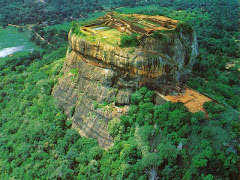
Yala National Park is geographically located in Sri Lanka at latitude 06°16' - 06°42' North and longitude 81°15' - 81°42' East. The Park can be visited via the town of Tissamaharama in the Hambantota District of the Southern Province.
While Block I has good access roads, access to Blocks II and III is limited mainly to dry weather. There are eight Park bungalows all of which are within Yala Block I. Another has been constructed at Katagamuwa Sanctuary, and one more is now ready for occupation in Yala Block IV. Accommodation is available for 8-10 people in each bungalow on the basis of prior reservations with the Department of Wildlife Conservation. Apart from resident visitors occupying the bungalows, a large number of day visitors enter the Park.
The Block I boundaries of the Park, take in 19 kilometers of sea coast in the southeast from Amaduwa to Yala, 19 kilometers from Yala up the Menik Ganga to Pahalahentota, 19 kilometers from Pahalahentota to Bambawa, and 3 kilometers from Bambawa to Palatupana.
Early History
The earliest epigraphic "Brahmi" inscriptions discovered in Sri Lanka and in this region date back to the 2nd century B.C. Prior to this the Indo-Aryan settlers from Northern India as represented,in the legend of Vijaya, were well established and in full control of the area. Edifices of the earliest Buddhist cave monastery type began to be constructed wherever there was human habitation and in suitable rock outcrops, of which there are many in the area. There are to this day innumerable and very interesting remains of cave dwellings from the pre-Christian era."
This region was part of the Rohana (Ruhuna) Kingdom, having an advanced civilization as evinced by remains of dagabas and ancient artificial reservoirs (tanks), built by clever hydrological engineers, to irrigate large extents of cultivable land.
After the 10th century, historical evidence draws attention to the absence of inscriptions later than the 10th century A.D. "Architectural and sculptural remains of the medieval period are absent. It would appear to be a justifiable inference that some sudden de-population of the region occurred. The ancient chronicles supply no information whatsoever and the jungle tide spread covering the past with a mantle of secondary forest. These have matured to the climax stands seen in Yala today.


















No comments:
Post a Comment